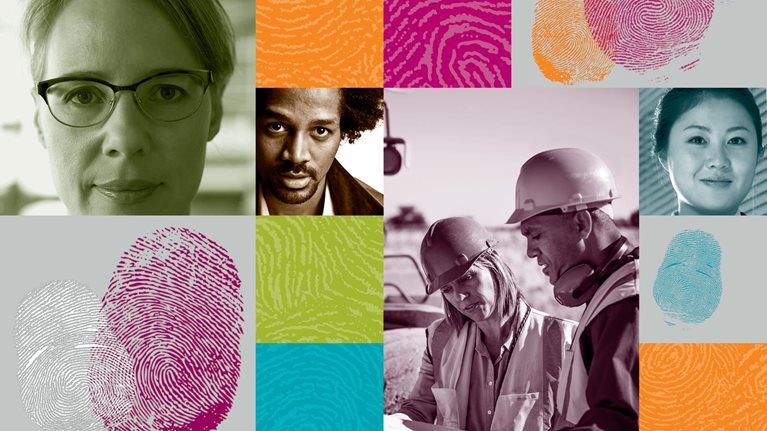Pervasive societal inequity in the United States is strikingly evident in the start-up world. In 2022, Black and Latino1 founders received only 1 percent and 1.5 percent respectively of total US venture capital (VC) funding.2 Women-founded teams received 1.9 percent of VC funds, and only 0.1 percent of VC funds went to Black and Latino women founders.3
It’s a gap that persists through each stage of growth. Looking at the total funding received (across stages) for the highest-funded start-ups at the time of exit reveals that the average start-up of a White male founder received over $210 million in total funding, while the average start-up of an underrepresented founder received a mere 43 percent of that—$91.1 million (Exhibit 1).4

It’s also a gap on both sides of the table—only 1.4 percent of the $82 trillion in US assets under management (AUM) is managed by women or BIPOC managers (as of 2021).5 In general, funds that flow from asset managers match their demographics.6
Untapped innovation and investment opportunities
Closing this gap is not just the right thing to do—it is also key to driving innovation and unlocking economic gains. Underrepresented founders often create companies (such as Spanx, 23andMe, and Fenty Beauty) that have the potential to outperform their peers and tap into underserved markets.
Our research into the economic state of Latinos and Black Americans suggests that in a parity scenario, Black- and Latino-owned businesses would generate an additional $1.6 trillion and $2.3 trillion respectively, assuming Black- and Latino-owned business ownership matched their share of the population and their business revenues matched those of their peers.7
Beyond the larger macroeconomic gains, founders with greater gender and ethnic diversity achieve 30 percent higher returns for investors upon exit than their White men founder counterparts.8
We invest in founders with varying ethnic backgrounds and lived experiences. They’ve overcome unique challenges to get where they are. It makes the tech more relevant and resilient. They have different lived experiences, which helps them outperform—they better understand their markets and that increases customer stickiness.
In this report, we set out to highlight the stories behind them—to dig into the specific challenges for underrepresented founders that have resulted in such a disproportionate gap in investment opportunities. We heard the stories behind the data, through interviews with over 50 founders and other stakeholders within the start-up ecosystem (including VC funds, limited partners (LPs), and accelerators).9 And to identify the highest priority areas, we complemented these interviews with a survey of start-up founders in March and April 2023, with 161 total respondents—including 80 women and 88 BIPOC.
The underrepresented founder experience is littered with challenges
All founders experience roadblocks when creating new, innovative businesses. Underrepresented founders, however, experience greater hurdles. These challenges tend to fall into four “Big Rock” categories that compound over time and lead to the representation gap in the overall founder population.
Big Rock #1: Systemic limited access to start-up network, community support, and resources
In the United States, White families on average have 13 times the wealth of Black families and six times that of Hispanic families.1 Founders who are less connected to wealthy communities tend to know fewer people who are willing to use their financial and social capital for support. Underrepresented founders are disproportionately developing relationships from cold outreach, rather than a warm introduction, which is much less likely to work. They also tend to be less exposed to entrepreneurial, educational, and investor networks, which bring resources that can help their companies grow. They are also less likely to have personal savings they can use to begin the journey.
Underrepresented founders are often tokenized; they tend to be offered a barrage of programs to mentor or support them, but don’t provide meaningful help, connections, or long-term contracts. This mentorship without social capital on the line, as one investor pointed out, “ . . . is useless. You can mentor me until you turn blue, but if you’re not willing to put your social capital at play, it’s pointless.”
Big Rock #2: The need to overcome biases related to founder perception
When underrepresented founders interact with the start-up ecosystem, they face unconscious biases based on their gender, ethnicity, or cultural background. Their outward appearances influence how customers, investors, cofounders, and other stakeholders respond, most often in less favorable ways.
Many underrepresented founders have a myriad stories about being doubted by investors on their expertise, dismissed for their naivety, and questioned on their dedication to their company.1


I had learned to adapt my language on the phone to appear White, but when it came to being in person, I would pray before walking in the room to make sure I would receive the same reaction as I did on the phone.
Three factors that influence investor bias
Our research shows three conditions that influence investor bias towards underrepresented founders:
- A founder’s affinity influences the willingness to invest. Having an identity that matches investors’ expectations bestows a halo of “expertise” upon the founder.
- A founder’s gender or ethnic background matches that of the investor. For example, 16 percent of women reported that their investors were “mostly women” compared to only 1 percent of men.
- One of the cofounders is a White man. One investor confided, “There are many instances where diverse founders have been told to bring cis, straight, White men into leadership positions because the likelihood of raising capital increases significantly. This is pure discrimination that is particularly present in later stage and growth rounds.”


Big Rock #3: Limited established blueprint for success
While start-up investors, particularly in VC, are making high-risk, high-growth bets, their decisions are predicated on historical-pattern matching when deciding which companies may be relatively lower risk. This can be a difficult barrier to cross for underrepresented founders, whose ideas, solutions, or business models—by nature of being on the cusp of innovation—don’t align with historical precedent.
An immigrant founder described how some investors struggled to understand the revenue potential of her target market, “I realized that Hispanics were always an afterthought. . . . Innovation and technology were not happening in the Hispanic marketplace, because nobody was paying attention.”
Big Rock #4: A greater need for mental health resilience
In the face of the first three compounding challenges, underrepresented founders are asked to carry an outsized mental burden that requires dogged perseverance with immense resilience and grit.
Underrepresentation creates isolation; representation empowers
For those who don’t have role models like them or close communities to rely on, it can be a lonely journey. One Black founder told us that he initially struggled to see himself as an entrepreneur. Now that he is one, he feels isolated from both the start-up ecosystem and his own community. The journey can feel especially isolating when failure doesn’t feel like an option. No founder wants to fail, but underrepresented founders are often carrying the burden of success on behalf of their whole community, not just for themselves. Several Black founders in particular expressed frustration about having to excel while “working twice as hard to get half as far.”
As a White man founder, you are empowered to fail; it is celebrated. But as an underrepresented founder, you don’t have that same mindset. These societal norms tell you that if you fail, you failed and it’s your fault . . . not that you couldn’t fundraise, or the market wasn’t ready.
A founder’s journey: Six significant inflection points
Through our research, we identified six inflection points that, due to the compounding Big Rock challenges, can change the trajectory of the underrepresented founder’s journey (Exhibit 2). At each inflection point, more underrepresented founders drop out of the journey.
Please note that this is not an exhaustive list of reasons; it is rather meant to paint a picture of why the gap in representation is what it is. It represents key points in the journey but is not a formula; there is no one-size-fits-all approach to starting and scaling a company.

Four key actions for stakeholders
It’s clear that investing time, money, and resources into underrepresented founders is both a crucial step in social equity and an economic imperative. The stakes for investors are high—outsized returns (particularly in the near term) and greater innovation for customers and consumers in underserved markets. Stakeholders who figure out how to effectively act now stand to gain by leaps and bounds.
We identified four actions that stakeholders can take now to move the needle, in consultation with their internal advisors.
Several types of investors stand to gain from the outperformance of gender and ethnically diverse portfolios—individual investors, companies, investing institutions, and government actors. Success will look different for each type of investor. For companies, building programs to bring innovative offerings can deliver value to current and new customers as well as employees. Government actors can stimulate entrepreneurship, and drive wealth creation and employment for women and ethnically diverse citizens. Individual investors and institutions stand to benefit from the outperformance of underrepresented founders and the potential of underserved markets.
1. Expand sourcing pools and provide training & development opportunities to expand the share of women and BIPOC individuals considered for hiring and for promotions
Research shows that a more diverse pool of checkwriters naturally leads to a more diverse portfolio.12 The current ecosystem, in which AUM is heavily concentrated in the hands of White men checkwriters, might require an intentional expansion of hiring sourcing pools and company-wide upskilling to grow the representation of women and checkwriters from diverse backgrounds.
Opportunities for improvement
While these examples demonstrate a start in promoting diversity in investor roles, there is significant opportunity to push further on the institutional investor side. The gap is even wider for LPs. Several actions can help:
- Source women and BIPOC candidates for the application pool for any checkwriter role. Research shows that likelihood of hiring a woman or BIPOC candidate grows by 79 or 194 times respectively if there are at least two candidates in the finalist pool.13
- Expand sourcing pools to external prospective applicants. Organizations that are still making progress on their diversity goals with respect to current employees, can look externally to candidates for women and checkwriters from diverse backgrounds in parallel.
- Build partnerships with pipeline programs for a pool of top-notch investor candidates.
- Focus on retention practices for women and investors from diverse backgrounds at the top.
Reflect on progress
- How does the diversity of your organization’s capital allocators compare to the diversity of the United States, or the city or state in which your organization is based?
- What goals has your organization set for diversity in capital allocator roles, if any?
- What partnerships has your organization formed to facilitate successful recruiting and retention of women and investors from diverse backgrounds?
2. Increase the flow of cash and capital investments that go to women and checkwriters and founders from diverse backgrounds
Commit to investing in women and founders and checkwriters from diverse backgrounds by addressing unconscious biases, setting goals, and broadening your sourcing pool. Many stakeholders are making progress in this area by doing the following:
- Leaders are intentionally addressing biases in the due diligence process.
- Traditional LPs are making a concerted effort to invest in diverse founders and managers.
- Government, companies, and other organizations are stepping in to provide grants to more accessible funding mechanisms.
- State government funds are investing in women and BIPOC emerging managers and committing to grow their allocations over time.
Opportunities for improvement
- Commit to processes to receive and review cold outreaches.
- Pursue strategies to eliminate bias in outreach review and due diligence.
- Consider expanding your organization’s investment thesis to include a focus on underrepresented founders and investors.
- Develop partnerships with other women- or BIPOC-led funds and organizations.
Reflect on progress
- What percent of your organization’s capital is invested in women or founders from diverse backgrounds?
- How does your organization screen and evaluate potential investments?
3. Leverage non-monetary strengths to level the playing field for women and founders and investors from diverse backgrounds
Underrepresented founders often lack supporters who are willing to put their social capital on the line to connect them to investors and customers. To be of real use beyond a check, organizations need to consider how they can deploy their unique knowledge, connections, and resources in support of underrepresented founders after they invest. A number of institutions are making plays:
- Companies are integrating start-ups into their platform-based revenue models.
- Institutions are forming partnerships to collectively connect start-ups with access to capital, customers, and industry expertise.
- Investment-focused institutions are developing programs to meaningfully provide resources to underrepresented founders, which can expand their investment markets and increase their interest from a variety of stakeholders.
- Institutions are starting to amplify alternative funding vehicles (for example, permanent capital, invoice, and debt-based financing).
- Diversity focused venture capital firms and other organizations are starting to incorporate a focus on mental health in their model.
Opportunities for improvement
- Commit to offering expertise on a specific topic or skillset tailored to an underrepresented founder’s needs.
- Commit to connecting underrepresented founders with other investors, customers, and resources in meaningful and structured ways.
- Develop mutually beneficial programs or partnerships for underrepresented founders that tap into your organizational strengths.
- Accelerate the development of alternate funding vehicles to benefit underrepresented founders.
- Develop programming for key topics for start-up founders, such as types of funding, how to raise capital, and “watch-outs.”
Reflect on progress
- How do you, or how does your organization, interact with or sponsor underrepresented founders?
- What resources, knowledge, or connections do you (or does your organization) uniquely have that you could use to elevate women and founders from diverse backgrounds?
4. Develop and implement aspirations to drive accountability and transparency across these three solutions
Establishing standardized metrics and regularly tracking them can help organizations hold themselves accountable to making real change. Publicly committing to hiring aspirations for women and investors from diverse backgrounds, allocating capital to underrepresented investors and founders, measuring non-monetary support, and tracking outcomes can motivate organizations to hold themselves and others accountable to tapping into the vast economic innovation potential.
Reflect on progress
- Which, if any, DEI aspirations do you, or your organization, track?
- What goals could you, or your organization, set to achieve greater transparency and accountability?
Opportunities for improvement
The opportunity for improvement for this action is simple: make more public commitments and measure outcomes. Organizations that have made commitments can consider being more transparent about their progress.
Through this research, we have recognized the urgency to act now and the role we can play in fostering growth for underrepresented founders. For example, we have also launched InNYC and InLA, two start-up accelerator programs focused on providing pro bono McKinsey engagements to underrepresented founders in New York City and Los Angeles.
By doing more to support underestimated founders and closing the gap in investment opportunities and other less tangible support, representation in the US start-up ecosystem could shift to more closely match that of the country at large—and make leaps and bounds toward an equitable and prosperous society. We hope that this report can shine a spotlight on the many ways in which stakeholders can help unlock this enormous opportunity for the US economy and all its constituents.

